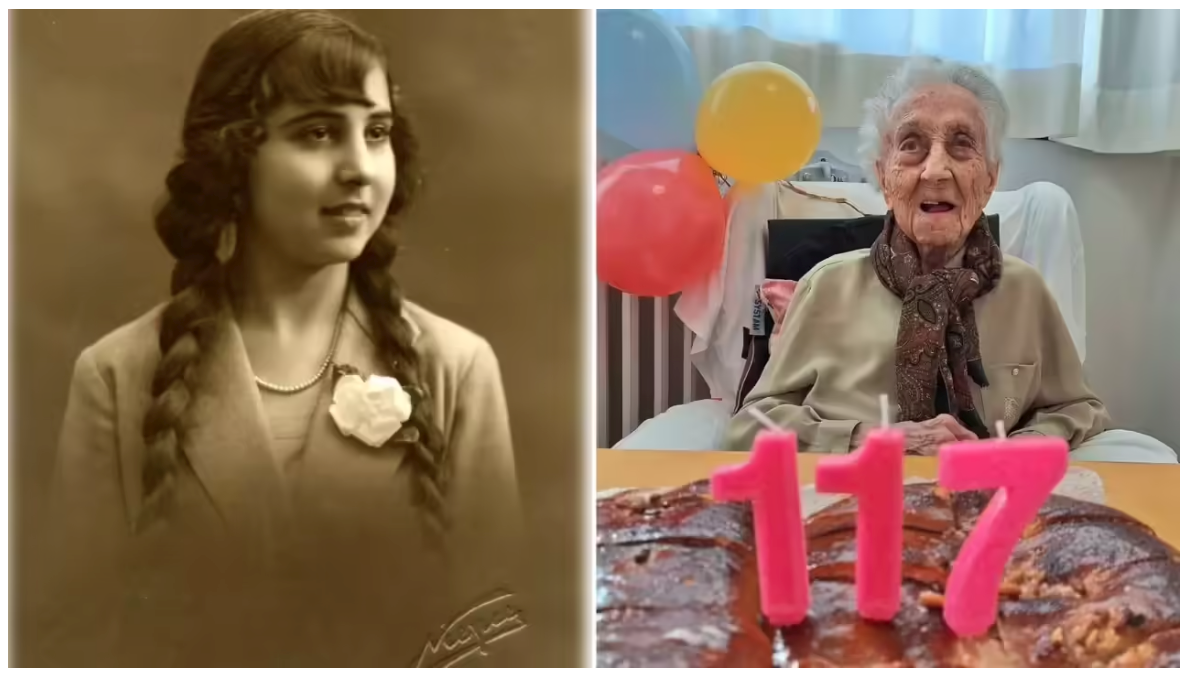# The Science of Living to 117
When María Branyas Morera, the world’s oldest living person, died in August 2024, she was 117 years and 168 days old. Born in San Francisco in 1907 and raised in Spain, she lived through two world wars, multiple pandemics, and more than a century of profound social change. Her remarkable longevity drew the attention of scientists, who set out to understand how her body endured for so long without succumbing to the illnesses that usually come with age.
María spent most of her life in Catalonia, where she followed a Mediterranean diet and ate yogurt daily. She enjoyed gardening, walking, reading, playing piano, and spending time with family, friends, and the dogs at her residence. She kept regular sleep habits and remained socially engaged well into her later years. These patterns of diet, activity, and community may have supported the biological resilience revealed in her samples.
A team of researchers in Spain and elsewhere carried out one of the most detailed biological investigations ever conducted on a single individual, and the most comprehensive study of any supercentenarian. They examined María’s genome, immune system, metabolism, proteins, microbiome, and epigenetic profile. The results give a layered view of extreme aging, showing both the wear of time and the unusual strengths that appeared to protect her health.
## A Genetic Foundation
The study revealed no single “longevity gene.” Instead, María carried a collection of rare genetic variants scattered across pathways tied to immunity, heart health, cognition, and mitochondrial energy production. These subtle advantages likely worked in combination. Her telomeres—the protective caps at the ends of chromosomes—were strikingly short, among the lowest seen in healthy people. Short telomeres usually predict illness, but in her case they may have acted as a biological clock without triggering disease. Some researchers suggest that telomere erosion might even limit cancer risk by curbing the ability of malignant cells to divide.
## The Immune System at Work
Blood analysis showed familiar signs of age. She had clonal hematopoiesis, a condition in which blood cells acquire mutations that can predispose to cancer or cardiovascular disease. Her B cells also carried features linked with aging. Yet these potential risks never developed into illness. At the same time, her immune system displayed youthful characteristics, including preserved autophagy and strong populations of cytotoxic T cells. These defenses may have helped her resist infection and malignancy even in her last years.
## A Metabolism That Defied Age
One of the most striking findings came from her metabolic profile. María processed fats with remarkable efficiency. Her triglycerides and very-low-density lipoproteins were extremely low, while her high-density lipoproteins—the so-called “good cholesterol”—were exceptionally high. She also showed very low levels of inflammation, a feature strongly associated with protection against heart disease, diabetes, and dementia. Taken together, these traits offered a picture of a body that continued to run smoothly long after most people’s systems falter.
## The Microbial Signature of Youth
The microbes living in her gut told a similar story. Diversity was high, and Bifidobacterium, a beneficial bacterial group that usually declines with age, was unusually abundant. She ate yogurt daily, which may have supported this microbiome balance. Harmful bacterial groups tied to inflammation and frailty were less common. This bacterial profile linked neatly with her anti-inflammatory metabolism and with the Mediterranean diet she followed for much of her life.
## Epigenetic Youthfulness
Another layer of protection came from her epigenome—the chemical modifications that regulate gene activity. Across several independent measures, her “biological age” read decades younger than her actual years. She also maintained methylation at repetitive DNA sequences, a stabilizing feature often lost in older individuals. These molecular signs suggest that her cells aged at a slower pace than her body’s calendar indicated.
## A Dual Portrait of Aging
The study paints a complex picture. On one side were unmistakable marks of time: short telomeres, mutated blood cells, and age-associated immune changes. On the other side were protective systems that kept her organs functioning and her mind intact. Disease and decline, so often seen as inseparable from aging, did not follow in lockstep.
## What It Means for the Rest of Us
The case of María cannot be taken as a blueprint for everyone. She was a singular individual, shaped by both genetics and lifelong habits. Yet her biology highlights possible paths toward healthier aging. Efficient lipid metabolism, low chronic inflammation, a supportive microbiome, and stable epigenetic regulation emerge as recurring themes. Each represents a potential lever for extending healthspan, whether through diet, lifestyle, or future therapies.
Studying one extraordinary life does not answer every question. It does, however, challenge assumptions about the limits of the human body. María’s story suggests that aging and disease are not bound together as tightly as once thought. Under the right circumstances, the body can carry its years with surprising resilience.
—–
https://www.cell.com/cell-reports-medicine/fulltext/S2666-3791(25)00441-0

